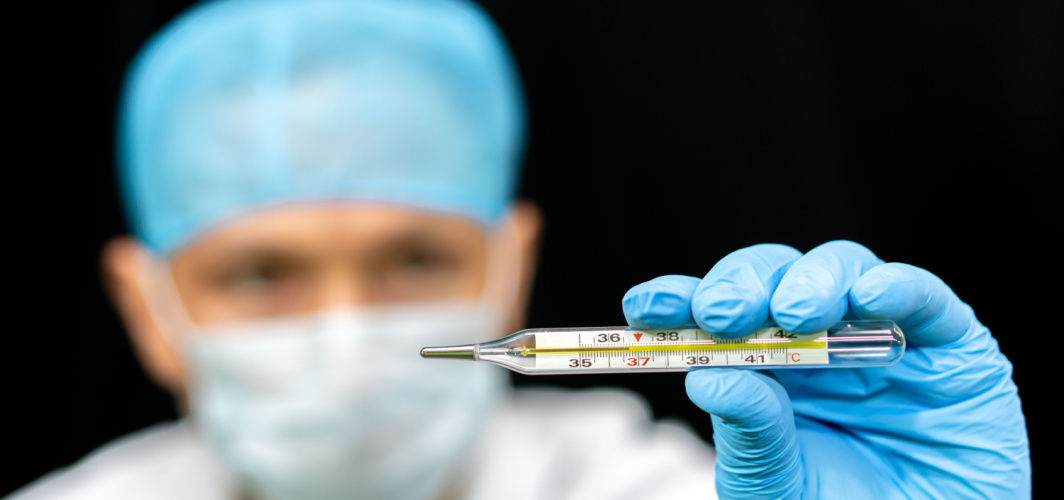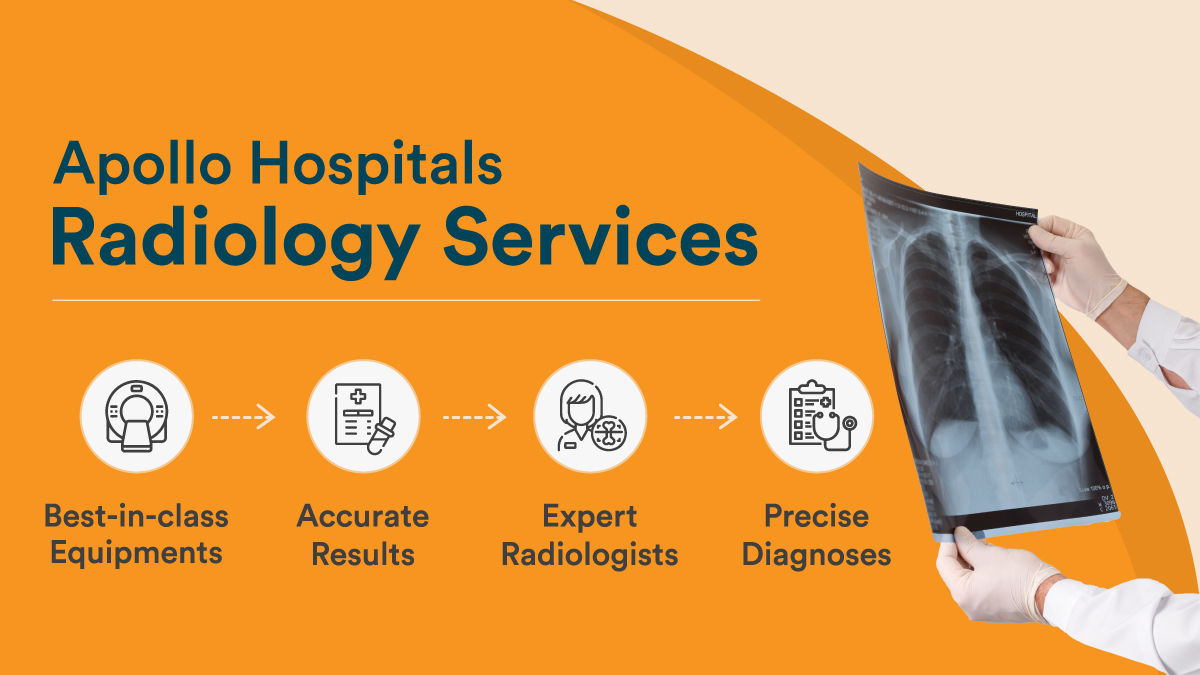General Health
6 Important Types Of X-rays Everyone Must Know
5 min read
By Apollo 24|7, Published on - 09 August 2023, Updated on - 12 September 2023
Share this article
0
0 like

X-ray, also known as a radiograph, is a non-invasive medical imaging technique that generates images of bones and tissues, including organs. By using a safe level of radiation, X-rays create these images, aiding in the diagnosis of injuries, diseases, and disorders, thus helping in treatment planning. During an X-ray, a specific part of the patient’s body is positioned in front of the X-ray detector and exposed to short X-ray pulses. As bones contain calcium, an element with a high atomic number, they absorb X-rays and appear as white areas in the image. Conversely, areas with trapped gases, such as in the lungs, appear as dark patches due to their low absorption rates.
Different Types of X-rays
Various X-ray techniques capture images of different internal body regions. Some prevalent X-ray types include:
1. Bone X-ray
It is employed to assess bone-related injuries or conditions. A bone X-ray is used to generate pictures of various bones in the body, like the elbow, wrist, arm, shoulder, spine, hip, pelvis, thigh, knee, ankle, leg, and foot. It aids in identifying dislocated joints, fractures, and degenerative bone diseases like arthritis. Additionally, bone X-rays can detect signs of bone infection or cancer, assist in orthopaedic surgery planning, and locate foreign objects within or around bones.
2. Dental X-Ray
They provide internal visuals of the teeth and jaws. These X-rays allow dentists to examine hidden structures like nerves, sinuses, jawbones, and tooth roots, which aren't visible during routine check-ups. They reveal details such as cavities, bone loss in the jaw, decay beneath fillings, infections, and the positions of impacted or unerupted teeth.
Dental X-rays are valuable for assessing conditions like abscessed teeth, specific tumours, and cysts. They aid in evaluating eligibility for treatments such as dental implants, dentures, or braces, and monitoring healing post-procedures like root canal therapy and dental bone grafts.
3. Abdominal X-ray
They provide images of the kidneys, liver, stomach and bladder. They aid in diagnosing conditions like bladder stones and kidney stones. These X-rays are also employed to investigate the causes of abdominal pain, including intestinal issues, masses, and obstructions. They can identify swallowed objects, intestinal blockages, or perforations.
Specialised types of abdominal X-rays, like barium enemas, use contrast dyes to assess the digestive system's components.
4. Chest X-ray
It produces images of your lungs, heart, and bones, aiding in the diagnosis of heart- and lung-related symptoms such as chronic cough, chest pain, and breathing difficulties.
Healthcare providers use chest X-rays to diagnose and monitor conditions like emphysema or chronic obstructive pulmonary disease (COPD), congestive heart failure, lung cancer, ribcage injuries, pneumonia, and tuberculosis.
5. Mammogram
It involves a low-dose X-ray of breast tissue, serving as a crucial tool for detecting early signs of breast cancer before any symptoms emerge. This type of mammography is referred to as a screening mammogram.
Additionally, mammography is utilised by healthcare providers to investigate abnormalities when new symptoms like lumps, nipple discharge, pain, or changes in breast skin arise. This form of mammography is termed a diagnostic mammogram.
6. Angiogram
It is a diagnostic technique that employs X-ray images to detect obstructions within your blood vessels, whether they are arteries or veins. This procedure allows doctors to observe the blood flow in specific areas of your body. Your doctor may recommend an angiogram if there are indications of blocked, injured, or irregular blood vessels.
These tests can cover various areas like the heart, kidneys, neck, or legs, aiding in the identification of issues within the arteries or veins. Through angiogram results, your provider can ascertain the source and severity of the vascular problem.
How Does an X-ray Work?
X-rays emit radiation beams that traverse the body, invisible and unfelt. These rays produce an image on a nearby X-ray detector. Within the body, soft tissues, bones, and other structures interact with radiation differently.
- Dense objects like bones readily absorb radiation, appearing bright white on the X-ray.
- Conversely, soft tissues, like organs, absorb radiation less effectively, thus appearing as various shades of grey.
Your doctor evaluates both X-ray images and the radiologist's report to determine the next steps.
To book your test scans, Click Here
FAQs
Q. What is an X-ray with contrast material?
Certain X-ray procedures involve the use of contrast material, which can be in liquid, pill, or powder form. Administered before the X-ray, this substance alters the appearance of soft tissues and structures on the images, enhancing their visibility for more detailed examination.
Q. How to prepare for an X-ray?
Usually, there is little to no preparation necessary for an X-ray. Inform your doctor about your medical history, medications, and allergies. If you are pregnant, suspect pregnancy, or are breastfeeding, then notify your provider before undergoing an X-ray. Depending on the type of X-ray, your provider may advise you to avoid lotions, remove metal objects, abstain from eating/drinking (for gastrointestinal tract X-rays), or change into a gown.
Q. What are the risks of an X-ray?
While X-rays involve radiation exposure with a potential risk of health issues, the chances of radiation overexposure are low. Various X-rays differ in radiation levels. Although safe and effective for all ages, X-rays can be harmful to a foetus. Pregnant women might be recommended alternatives like ultrasound or MRI.
Q. When do I get the results of an X-ray?
Bone X-ray results are typically available immediately, with your provider possibly discussing them with you after the procedure. Other X-ray results, like GI tests, may take longer. Consult your provider to determine the expected timeline for receiving your results.
Q. What are the benefits of an X-ray?
X-rays offer non-invasive diagnostic capabilities, aiding in the identification of medical conditions or treatment monitoring without invasive procedures. Additionally, X-rays assist medical professionals during procedures involving catheters, stents, or other device insertion.
General Health
Leave Comment
Recommended for you

General Health
Benefits Of Drinking Beetroot Juice For Gut Health
Beetroot juice plays a healthy role in supporting digestion and gut health. The fibre and antioxidants in beetroot juice benefit digestion and gut health. You can incorporate it into your diet by making a smoothie or adding it to salad dressing.

General Health
Types Of Thermometers: How To Use & Accuracy Levels
Thermometers are vital in medicine for accurate temperature measurement. Different types, including contact, remote, temporal artery, tympanic, and mercury thermometers, offer various benefits and methods of use. Read this article to choose the right thermometer that ensures precise readings and better healthcare outcomes.

General Health
Jaundice in Newborns: What Parents Should Know
Parents must consult a doctor if their baby shows intensified yellow pigmentation along with fever, high-pitched cries, and listlessness.
Subscribe
Sign up for our free Health Library Daily Newsletter
Get doctor-approved health tips, news, and more.
Visual Stories

Plant-based Foods That Are a Great Source of Iron
Tap to continue exploring
Recommended for you

General Health
Benefits Of Drinking Beetroot Juice For Gut Health
Beetroot juice plays a healthy role in supporting digestion and gut health. The fibre and antioxidants in beetroot juice benefit digestion and gut health. You can incorporate it into your diet by making a smoothie or adding it to salad dressing.

General Health
Types Of Thermometers: How To Use & Accuracy Levels
Thermometers are vital in medicine for accurate temperature measurement. Different types, including contact, remote, temporal artery, tympanic, and mercury thermometers, offer various benefits and methods of use. Read this article to choose the right thermometer that ensures precise readings and better healthcare outcomes.

General Health
Jaundice in Newborns: What Parents Should Know
Parents must consult a doctor if their baby shows intensified yellow pigmentation along with fever, high-pitched cries, and listlessness.

